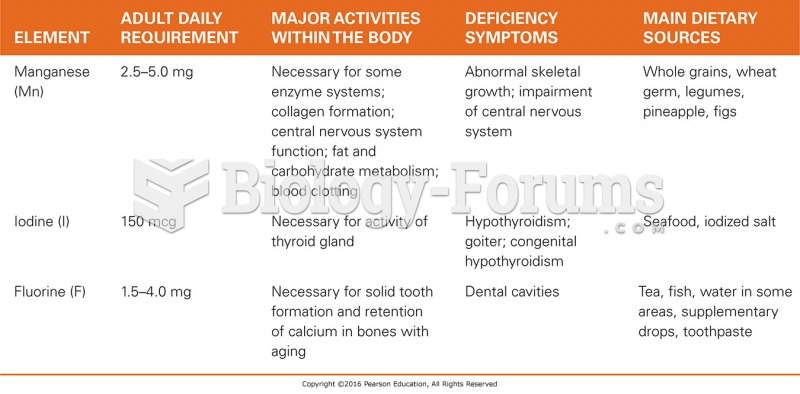Answer to Question 1
Thomas Scheff has developed a sociological theory. Scheff's main hypothesis is that labeling is the most important determinant of people's displaying a chronic (long-term) mental illness. Scheff begins by defining how he determines, for research purposes, who is mentally ill. Before giving his definition, he notes:
One source of immediate embarrassment to any social theory of mental illness is that the terms used in referring to these phenomena in our society prejudge an issue. The medical metaphor mental illness suggests a determinate process which occurs within an individual: the unfolding and development of disease. In order to avoid this assumption, sociological, rather than medical, concepts should be utilized to formulate the problem. He states that the symptoms of mental illness can be viewed as violations of social norms and that he uses the term mental illness only to refer to those assigned such a label by professionals (usually psychiatrists).
Scheff indicates that thousands of studies have been conducted that seek to identify the origins of long-term mental disorders. Practically all of this research has focused on internal causes (for example, metabolic disorders, unconscious conflicts, chemical imbalances, heredity factors). These research efforts have been based on medical and psychological models of human behavior. Yet, amazingly, in spite of this extensive investigation, the determinants of chronic mental disorders (for example, schizophrenia) are largely unknown. Scheff suggests that researchers may be looking in the wrong direction. He asserts that the major determinants are not inside a person but in social processes-that is, in interactions with others.
Everyone, at times, violates social norms and commits acts that could be labeled as symptoms of mental illness. For example, a person may occasionally get in fights with others, experience intense depression or grief, be highly anxious, use drugs or alcohol to excess, display a fetish, or commit a highly unusual or bizarre act. Usually the person who has unwanted emotions or who commits deviant acts is not identified (labeled) as mentally ill. His or her emotions and actions are ignored, unrecognized, or rationalized some other manner. Occasionally, however, such norm violations are perceived by others as abnormal. The offenders are then labeled mentally ill and consequently are related to as if they were mentally ill. Being highly suggestible to cues from others, they then begin to define and perceive themselves as mentally ill. Traditional stereotypes define the mentally ill role, both for those who are labeled mentally ill and for the people they interact with. Those labeled mentally ill are often rewarded for enacting that social role. They are given sympathy and attention and are excused from holding a job, fulfilling other role requirements, and being held responsible for their wrongdoings. In addition, those labeled mentally ill are punished for attempting to return to conventional roles. They are viewed with suspicion and implicitly considered to still be insane. They may have considerable difficulty obtaining employment or receiving a job promotion.
Answer to Question 2
Lasgue in 1873 and Gull in 1874 designated the term anorexia nervosa (AN) in separate cases in which they reported young females who were starving themselves. Descriptions of this illness became more frequent in the late 19th century. Changes with the DSM-5 for anorexia include three diagnostic elements that focus on persistent food or energy intake restriction; an intense fear of weight gain, becoming fat and exhibiting behavior which demonstrates a fear of weight gain; and a disturbance in perceptions of one's body that results in a lack of recognition and denial of being underweight. Anorexia nervosa is subtyped as being either restricting type, in which individuals will experience weight loss through dietary restraint, abstention from food, or excessive exercise, but have not engaged in bingeing or purging behaviors within the past 3 months. Binge-eating/purging subtype is characterized by those anorexics who have engaged in recurrent binge-eating or purging behaviors within a 3-month period. Severity is categorized as being mild, moderate, severe, or extreme, based on an individual's current body mass index (BMI). The primary age of onset is during adolescence or young adulthood, and the onset is often related to a stressful life experience.
Bulimia nervosa (BN), as noted in the current DSM-5 diagnostic criteria, was relatively obscure until the latter part of the 20th century. More prevalent than anorexia nervosa, individuals with BN strive to prevent weight gain or lose weight through recurrent episodes of binge/purge behaviors. Other hallmark characteristics include poor compensatory measures to avoid weight gain such as laxative use, vomiting, medication misuse, excessive exercise, abstention from food in addition to a sense of self based on body perception of shape and weight. The triggers to incidents of binge/purge episodes can vary, but stress and an inability to feel a sense of control may preclude an event. Most often carried out in secrecy, a bulimic will consume large amounts of high calorie foods in a relatively short period of about 2 hours. Afterwards the person feels extremely and frequently painfully full. The incidence of bingeing and purging can wax and wane, with the frequency occurring one or two times a week up to several times a day over a period of 3 months. Severity is categorized as being mild, moderate, severe, or extreme based on the number of inappropriate purging episodes/behaviors per week. Adolescence and young adulthood is the age most frequently affected by bulimia nervosa, often triggered by several life stressors.
Serious medical complications can arise with both disorders, and the incidence of death with AN appears to be higher when compared to individuals diagnosed with bulimia nervosa. A recent review of mortality rates with this population suggested the risk factors of AN patients may need to be staged, similar to cancer, in an effort to more effectively measure the incidence and death risks of this disease. Cardiac abnormalities, changes in brain function, osteoporosis, anemia, gastrointestinal problems, and altered blood chemistry may be seen in both anorexics and bulimics. Both disorders may exhibit symptoms of fatigue, sleep difficulties, and depression. In addition, individuals who binge and purge by vomiting often suffer from dental problems related to the loss of teeth enamel and gum disease because of hydrochloric acid in the vomitus.







